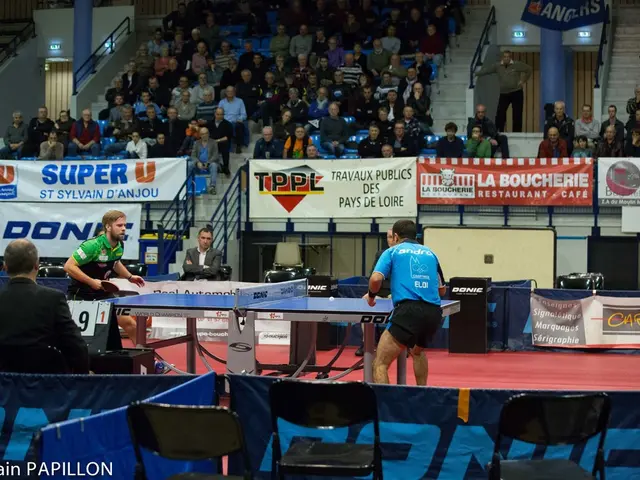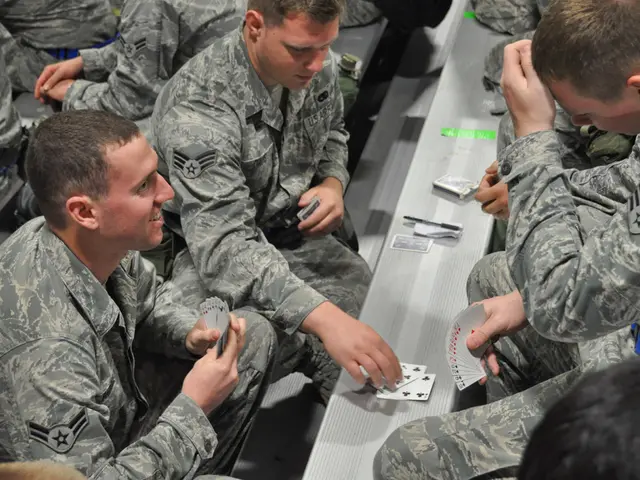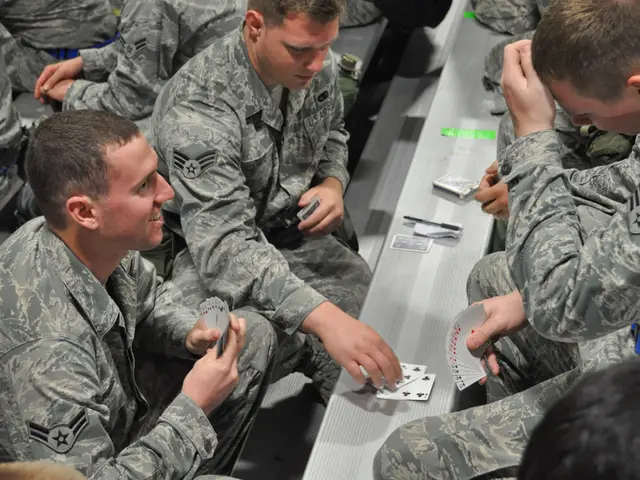Casinos Shufflin' Things Up: The continuous shuffler conundrum from a dealer's point of view
Engaging in Blackjack Games against a Machine that Perpetually Reshuffles Decks
Blackjack's evolution is constant, fueled by necessity and greed. From a single deck to shuffled by the dealer, the game has evolved over time. As accuracy, greed, and profit margins grew, the shoe was introduced to ensure fair gameplay. Fast forward to the present, and a new contender has entered the scene - the continuous shuffler. Let's take a peek at the continuous shuffler from a dealer's perspective, and explore the reasons it makes everyone but the casino brass uncomfortable.
The Big Unhappy
For those without a clue about continuous shufflers, they're those automated machines that shuffle cards constantly, with played cards feeding right back into the machine. It's as if you're playing with a brand-new deck each time. The casino I work for transitioned from the eight-deck shoe to a continuous shuffler over a year ago, and I'll tell you without any equivocation - nobody, be it the players or the dealers, likes it. The only ones who gleefully embrace this new technology are senior management. So the big question on everyone's minds: why?
Time's Money, Money's Time
From the bigwigs' perspective, the continuous shuffler offers two advantages. First, time is money, no questions asked. Casinos generate profits by the millions, and they'll squeeze out every extra percentage point they can get. By deploying continuous shufflers, the casino eliminates the downtime usually spent by a dealer to replace the discarded deck with a newly shuffled one. While this may appear insignificant, it adds up. Consider the multitude of hands that could be dealt during that downtime, then multiply it by 24 hours each day, 365 days each year - that's one heck of a lot of hands! It all boils down to hands per hour, which, in turn, translates to dollars per hour.
The second reason might not be so obvious, but it's as clear as day to the sharp-eyed player. continuous shufflers have effectively ended card counting. Card counting, while not a common skill in most players, is a game-changer when employed successfully. While casinos like the prospect of big wins for the public, it's all smoke and mirrors; the truth is the house always has an edge, and it depends on that edge to generate profits. Blackjack remains the only game where a card counter can create an edge for the player.
Fake Solution or Progress?
In future articles, I'll delve deeper into the ins and outs of card counting. For now, here's a quick rundown: There are several counting systems, but the most fundamental is to assign values of +1 to 2-3-4-5-6 and -1 to tens and aces, with 7-8-9 counting as zero. The counter will add or subtract 1 for each card dealt, creating the running count. After the hand, the running count is divided by the approximate number of decks still in play, resulting in the true count. As the true count rises, the bet amount rises as well. With the continuous shuffler, the running count will always be at zero at the outset of each hand, effectively negating the advantage for the card counter. From the casino's viewpoint, problem solved.
Now, you might wonder why a dealer wouldn't appreciate the continuous shuffler? I've yet to meet a player who's fond of the new machine, and we dealers catch an earful of their complaints. Players may murmur about rigged games, blame the shuffler for their losses, or accuse the machine of manipulation. They often fail to acknowledge basic strategy, even though proper play can have a significant impact on the game's outcome.
A continuous shuffler is merely a tool, functioning as intended when used properly by the house. It neither knows nor cares about the players or their strategies. Instead of focusing their ire on the machine, players should examine their own actions and understand the influence their intuition and emotions can have on their decisions. The erroneous belief that the machine is at fault for losses is nothing short of ludicrous.
Making a Movesie?
If you genuinely dislike the continuous shuffler, what can you do? What steps can we take to encourage casinos to revert to traditional shuffling methods? The solution lies in your wallet and your voice. A mass boycott and social media blitz can send a powerful message to casinos that continuous shufflers are hurting their bottom line. In turn, casinos, beholden to their pockets and their patrons, will reconsider their use of continuous shufflers and embrace the old ways. That's a sure bet!
In my next article, I'll share what changes I'd make to blackjack that would appeal to card counters, the casino, and the dealers. Good luck at the tables, and don't forget to tip the dealer!
Image Top Image: Shutterstock
P.S. This article was originally published in Casino Life Magazine Issue 169 September 2024
Footnotes
[1] "Keep Your Cards Close to Your Vest: A Guide to Card Counting in Blackjack" - Stanford Wong[2] "Beat the Dealer: A Winning Strategy for the Game of Twenty-One" - Edward O. Thorp[4] "Blackjack Fundamentals" - Harvey Dubner[5] "Blackjack Attack: Playing the Probabilities" - Don Schlesinger and Peter Griffin
Blackjack games at casinos, such as the one I work at, have transitioned to continuous shufflers, which players and dealers dislike. These machines, constant and automated, shuffle cards and create the illusion of a new deck each time.
From the casino management's point of view, the continuous shuffler offers benefits. It saves time by eliminating the dealer's downtime in shuffling decks, increasing the number of hands per hour, and thus generating more profit. Additionally, it effectively ends card counting, a skill that can give players an edge in blackjack.







